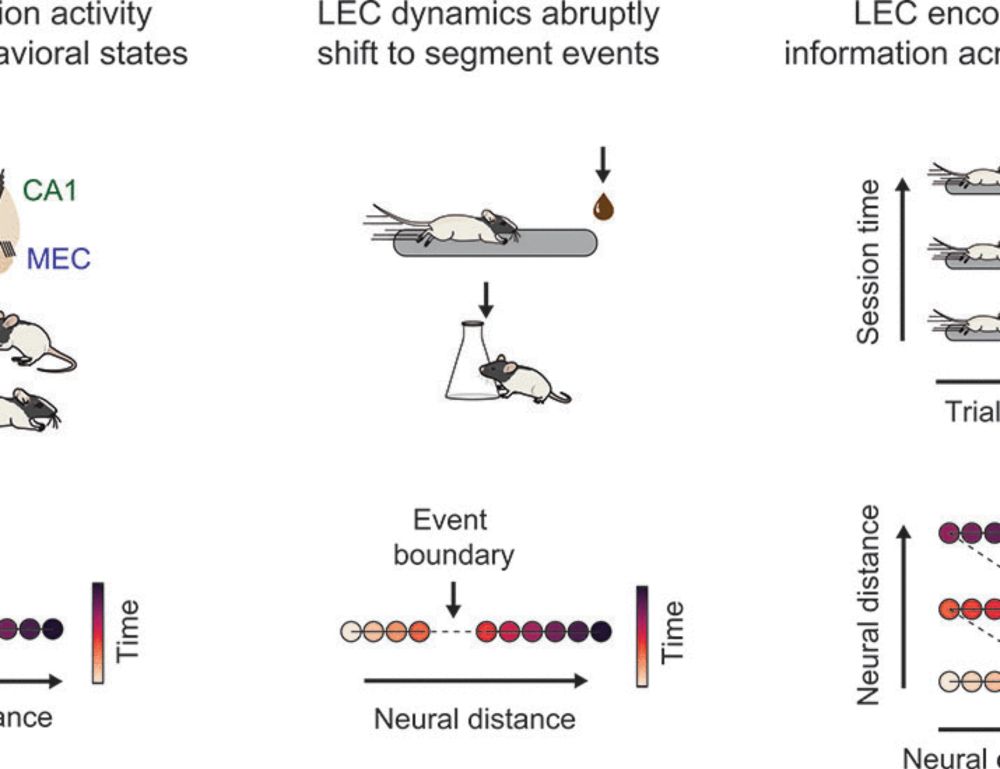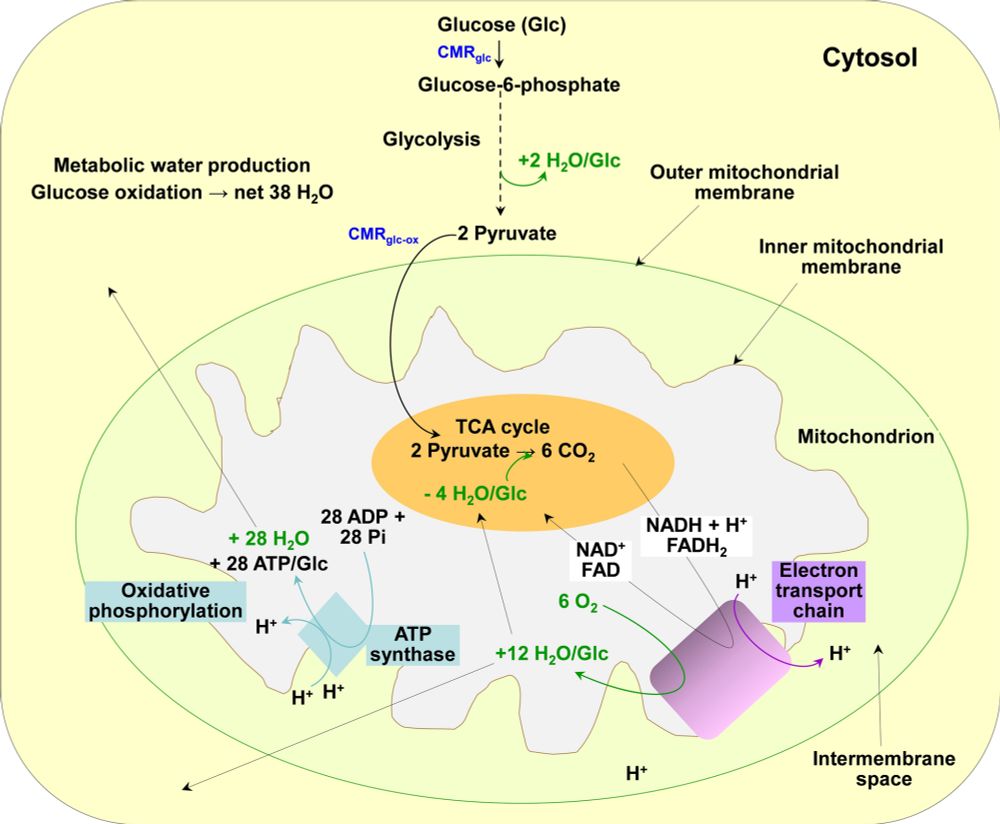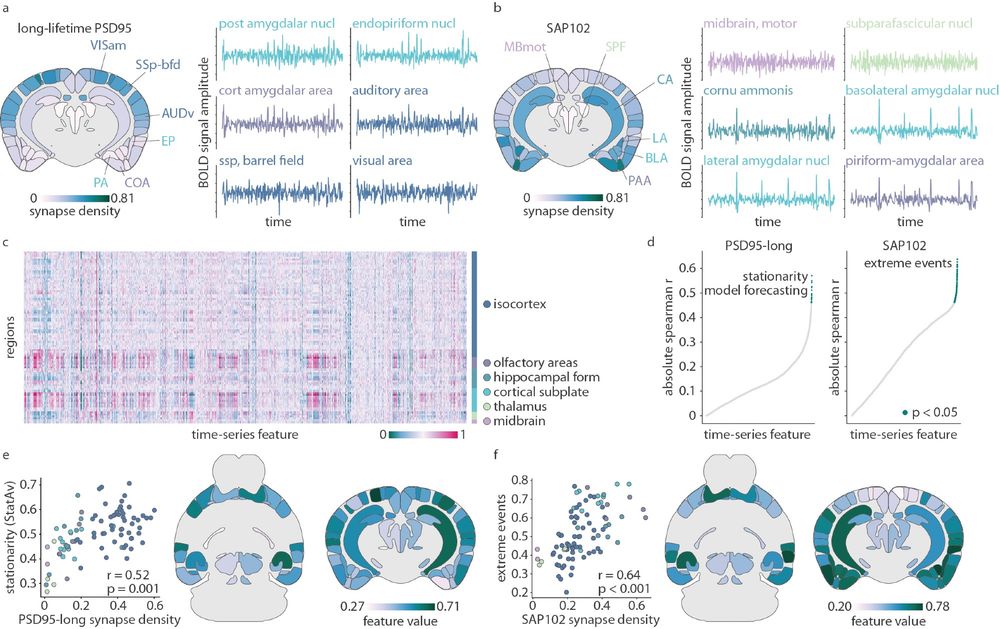
𝗧𝗵𝗲 𝗘𝗻𝗲𝗿𝗴𝗲𝘁𝗶𝗰 𝗖𝗼𝗹𝗹𝗮𝗽𝘀𝗲 𝗼𝗳 𝘁𝗵𝗲 𝗔𝗹𝘇𝗵𝗲𝗶𝗺𝗲𝗿’𝘀 𝗕𝗿𝗮𝗶𝗻: 𝗠𝗲𝘁𝗮𝗯𝗼𝗹𝗶𝗰 𝗜𝗻𝗳𝗹𝗲𝘅𝗶𝗯𝗶𝗹𝗶𝘁𝘆 𝗔𝗰𝗿𝗼𝘀𝘀 𝗖𝗲𝗹𝗹𝘀 𝗮𝗻𝗱 𝗡𝗲𝘁𝘄𝗼𝗿𝗸𝘀
We argue that Alzheimer’s disease is not just a problem of brain hypometabolism, but a disorder of metabolic inflexibility.
onlinelibrary.wiley.com/doi/10.1111/...

𝗧𝗵𝗲 𝗘𝗻𝗲𝗿𝗴𝗲𝘁𝗶𝗰 𝗖𝗼𝗹𝗹𝗮𝗽𝘀𝗲 𝗼𝗳 𝘁𝗵𝗲 𝗔𝗹𝘇𝗵𝗲𝗶𝗺𝗲𝗿’𝘀 𝗕𝗿𝗮𝗶𝗻: 𝗠𝗲𝘁𝗮𝗯𝗼𝗹𝗶𝗰 𝗜𝗻𝗳𝗹𝗲𝘅𝗶𝗯𝗶𝗹𝗶𝘁𝘆 𝗔𝗰𝗿𝗼𝘀𝘀 𝗖𝗲𝗹𝗹𝘀 𝗮𝗻𝗱 𝗡𝗲𝘁𝘄𝗼𝗿𝗸𝘀
We argue that Alzheimer’s disease is not just a problem of brain hypometabolism, but a disorder of metabolic inflexibility.
onlinelibrary.wiley.com/doi/10.1111/...


cng-lab.github.io/kiosk
cng-lab.github.io/kiosk
In @Science.org we show that activity in 🧠 memory circuits (LEC) drifts constantly, but makes sharp jumps at key moments, segmenting life into meaningful events. (1/2)
👉 www.science.org/doi/10.1126/...

In @Science.org we show that activity in 🧠 memory circuits (LEC) drifts constantly, but makes sharp jumps at key moments, segmenting life into meaningful events. (1/2)
👉 www.science.org/doi/10.1126/...
It left me quite excited.
youtu.be/0V8fSjo2T2w?...

It left me quite excited.
youtu.be/0V8fSjo2T2w?...

By @claudia-lopez.bsky.social
#neuroskyence
www.thetransmitter.org/mitochondria...

www.nature.com/articles/d41...
(study led by Martin Picard and Michel Thiebaut de Schotten)

www.nature.com/articles/d41...
(study led by Martin Picard and Michel Thiebaut de Schotten)
Register now: ow.ly/8Rgx50V6Xgr
#ISMRM #ISMRMMiniHub

Register now: ow.ly/8Rgx50V6Xgr
#ISMRM #ISMRMMiniHub
I still have a very incomplete picture but based on what I have been told, the damage to NIH and to many wonderful people who work(ed) there is/was impossible for me to imagine
1/n
I still have a very incomplete picture but based on what I have been told, the damage to NIH and to many wonderful people who work(ed) there is/was impossible for me to imagine
1/n
Led by Justine Hansen
Big news: there are all sorts of different synapse types in the brain 👀‼️⤵️

Led by Justine Hansen
Big news: there are all sorts of different synapse types in the brain 👀‼️⤵️
according to recent findings in mice.
By @giorgiag-sciwriter.bsky.social
www.thetransmitter.org/metabolism/f...

according to recent findings in mice.
By @giorgiag-sciwriter.bsky.social
www.thetransmitter.org/metabolism/f...
We are very excited to report the discovery of an oscillation in the Central Thalamus using rare direct recordings of human thalamic electrophysiology.
The novel oscillation is tightly coupled to specific, natural states of consciousness.🧵
We are very excited to report the discovery of an oscillation in the Central Thalamus using rare direct recordings of human thalamic electrophysiology.
The novel oscillation is tightly coupled to specific, natural states of consciousness.🧵

Below is a gift link. Let me know your thoughts 🙏🏼
www.nytimes.com/2024/12/20/s...

Below is a gift link. Let me know your thoughts 🙏🏼
www.nytimes.com/2024/12/20/s...
Neuropeptides are among the functionally diverse signaling molecules in the brain and body.
@cebric.bsky.social curates an atlas of neuropeptide receptors and relates it brain function 🧩 🧠 ⤵️

Neuropeptides are among the functionally diverse signaling molecules in the brain and body.
@cebric.bsky.social curates an atlas of neuropeptide receptors and relates it brain function 🧩 🧠 ⤵️
The brain keeps being amazing. These are neurons in the neocortex #FluorescenceFriday 🔬

The brain keeps being amazing. These are neurons in the neocortex #FluorescenceFriday 🔬
www.relx.com/investors/sh...
www.relx.com/investors/sh...

The renamed:
Bluesky-sized history of neuroscience (biased by my interests)
The renamed:
Bluesky-sized history of neuroscience (biased by my interests)
@cellpress.bsky.social
cell.com/cell-host-mi...
@cellpress.bsky.social
cell.com/cell-host-mi...


